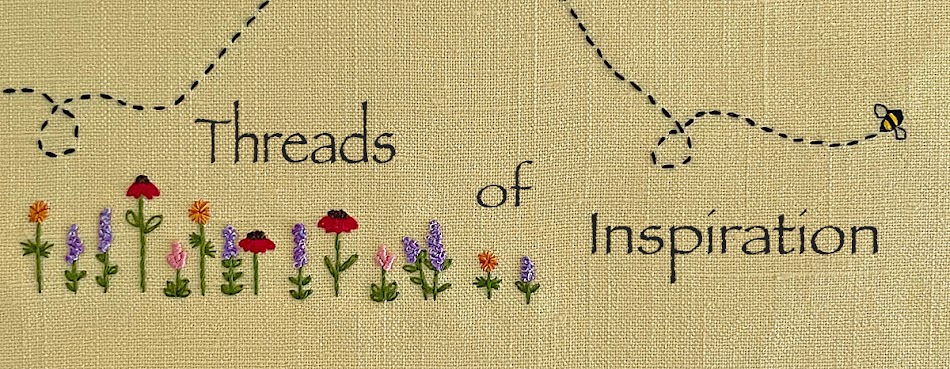 |
| Rumi Wisdom |
 |
| Back Stitch Letters |
 |
| Emerson Winter |
The second spiral design, Emerson Winter, has letters that are a little more stylized with small curves at the ends of some of the letters. I knew that using a back stitch wouldn't give me the look I wanted, so this time I used couching. If you've not done any couching you might find it awkward at first because you have to manage two threads in two needles but after a little practice it is easy. Basically one thread is placed over the line you want it to cover (called the laid stitch) and with the second needle and thread (referred to as the working thread) it is tacked down with tiny stitches. In the case of Emerson Winter I used embroidery floss, but this method allows you to use laid thread that is difficult to stitch with (metallic, thick, fuzzy or loopy threads) because it isn't going in and out of the fabric with every stitch. Couching allows you to get all the loops in the letters you could ever want.
 |
| Couched Letters |
 |
| Grateful Heart |
 |
| Working Satin Stitch Over Stem Stitch |
All of the lettering in these projects is pretty linear but another method of covering letters that have larger areas to be filled is satin stitch. This is often seen on vintage linens that have monograms. to see some fine examples of satin stitch monograms go here. Mary Corbet's Needle n Thread has a fine list of amazing examples.
In addition, here are links to Mary's videos that give excellent instructions for creating the stitches that were discussed.
Happy Stitching!
